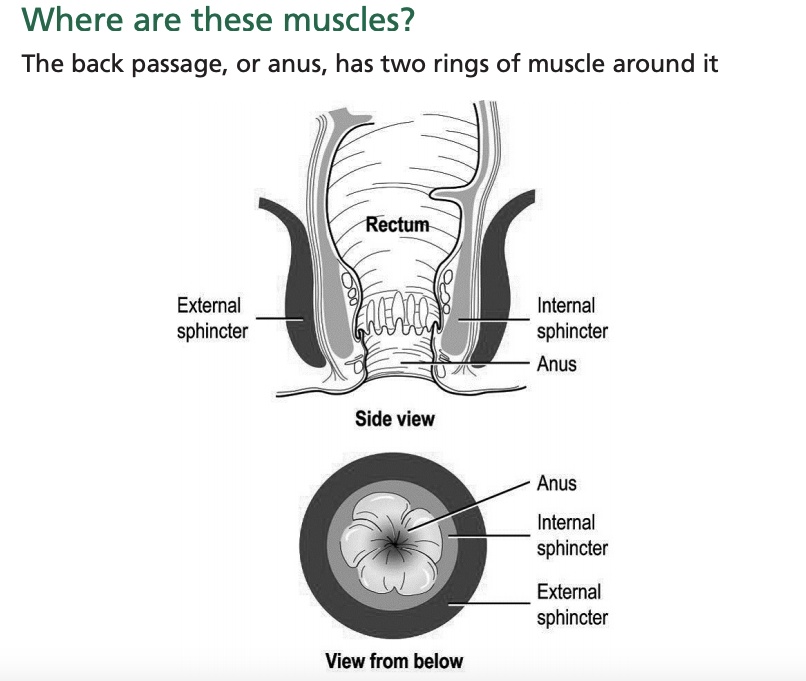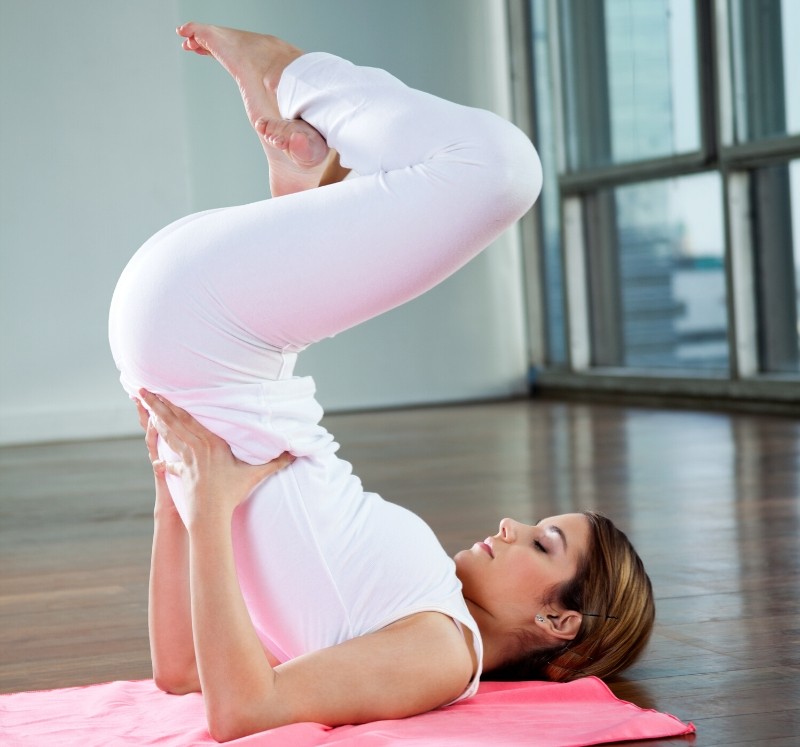Ashwini Mudra: How to Do It, Precautions, and Benefits
Ashwini Mudra, or the “horse gesture,” is a simple yet powerful yogic technique that involves the rhythmic contraction of the anal sphincter. This practice is designed to manipulate the flow of prana (vital energy), especially apana vayu, which governs...

>>Download Yoga Mudras Free PDF!
 Image Source: Canva
Image Source: CanvaAshwini Mudra, or the “horse gesture,” is a simple yet powerful yogic technique that involves the rhythmic contraction of the anal sphincter. This practice is designed to manipulate the flow of prana (vital energy), especially apana vayu, which governs the downward energy related to elimination and grounding. By redirecting this downward energy upwards, Ashwini Mudra promotes spiritual growth and physical well-being.
How does it work?
The term “Ashwini” comes from the Sanskrit word “Ashwa“, meaning horse. In yoga, this mudra mimics the natural contraction of a horse’s anal muscles, which helps horses retain energy and strength. Ashwini Mudra applies this principle by directing energy upwards instead of letting it dissipate downwards.
Ashwini Mudra is a type of Mana Mudra, focusing on contracting the anal sphincter muscles to strengthen the pelvic region, including the bladder, uterus, cervix, vagina, and rectum. Unlike Hasta Mudras (hand gestures), it involves no hand movements and centers solely on the pelvic muscles.
The contraction in Ashwini Mudra functions similarly to applying pressure at the bottom of a pipe to push water upward. By directing apana vayu (downward-moving energy) upwards into the body’s internal systems, it creates pressure at the base of the Sushumna Nadi central energy channel), facilitating the upward flow of prana (life energy). This smooth flow of prana can clear energy blockages and potentially lead to Kundalini awakening, a state of heightened consciousness and spiritual enlightenment.
How to do ashwini mudra(steps)
Sit in a meditative pose such as Lotus Pose, Easy Pose, or Thunderbolt Pose. Take a few deep breaths to fill your stomach with air. Alternatively, you can use other postures that bring the hips together, like Upward-Facing Dog. Inhale fully and hold your breath. Then, contract your anal sphincter muscles. Side & bottom view of anus sphincter muscle. Source: https://www.uhb.nhs.uk/
Side & bottom view of anus sphincter muscle. Source: https://www.uhb.nhs.uk/The contraction should feel similar to holding in stool, though you’re not actually holding it in.
While contracting the anal sphincter muscles, apply a little more pressure from inside the anus to lift the muscles upwards. You should feel the muscles being drawn away from the floor. Contract and lift the muscles for about 5 seconds, then release the pressure. Contract and pull up muscle in this manner for 5 seconds and then release the pressure. Repeat the contraction and release cycle slowly for 10 to 15 rounds to start. After completing the rounds, gently release the seated posture and come out of the pose slowly.Ashwini mudra with pranayama & bandha
Advanced practitioners can combine Ashwini Mudra with Pranayama, bandhas, and other mudras for enhanced benefits.
Begin by inhaling deeply and holding the breath. Bring your chin down to your chest to perform the throat lock (Jalandhara Bandha). Inside your mouth, touch the tip of your tongue to the palate to practice Kechari Mudra. Perform Ashwini Mudra by contracting the anal sphincter muscles and lifting them up. Hold the contraction for about 5 seconds, then release. To exit the pose, first release the chin lock, flatten your tongue, and then slowly relax the anal sphincter muscles. The practice is considered perfected when you feel a shivering wave moving from the bottom to the top of your body, indicating successful stimulation of Prana. ashwini mudra in shoulder stand. Image Source: Canva
ashwini mudra in shoulder stand. Image Source: CanvaAshwini Mudra can also be practiced in an inverted yoga pose such as Salamba Sarvangasana (Supported Shoulder Stand). In this pose, bend your knees and drop them forward. Then, perform Ashwini Mudra as described previously: contract the anal sphincter muscles, lift them up, hold for about 5 seconds, and then release.
What is the difference between moola bandha and ashwini Mudra?
Moola bandha (root lock) and Ashwini Mudra involve similar muscle groups, but Ashwini Mudra serves as a preparatory exercise for Moola Bandha. Here’s how they differ
In Ashwini Mudra, a larger area of pelvic muscles is engaged. In contrast, Moola Bandha focuses on contracting a smaller, specific area of the pelvic muscles. Mastery of Ashwini Mudra helps in developing the awareness needed for the precise muscle control required in Moola Bandha. Moola Bandha aims to lock energy at the root chakra, creating a stable point of focus. Ashwini Mudra, on the other hand, is designed to create a circuit for the flow of energy, which supports cleansing and balancing. Ashwini Mudra involves a dynamic, rhythmic contraction and relaxation of the anal sphincter muscles. In Moola Bandha, the emphasis is on holding the contraction of the muscles at the root chakra for an extended period to enhance energy control.Other than this, in Vajroli mudra, contraction of the genital area is done in place of anus sphincter.
Precautions & Contraindications
Avoid practicing Ashwini Mudra if you have recently undergone abdominal surgery or have severe abdominal issues. Pregnant women should avoid breath retention during this practice or perform it under expert supervision. Do not practice Ashwini Mudra if you have high blood pressure or heart disease, as breath retention may cause complications. Refrain from performing the mudra when you have a full bowel or gas to prevent discomfort. Practice Ashwini Mudra in seated, lying, or supported standing positions, and avoid doing it while walking.Side effects
Abdominal discomfort from excessive pressure or incorrect practice. Increased strain on pelvic organs, such as the bladder and uterus. Digestive distress if practiced on a full stomach or immediately after a meal.Ashwini mudra benefits
Ashwini Mudra provides specific benefits that enhance physical and mental well-being. It strengthens the pelvic muscles, supports digestive health, and improves energy flow within the body. Regular practice can also aid in spiritual growth by facilitating the upward movement of prana, leading to greater awareness and balance.
Strengthens Pelvic Muscles:: Ashwini Mudra helps tone and strengthen the pelvic muscles, including the bladder, uterus, and rectum. By regularly practicing this mudra, you enhance the muscle control and support for these organs, which can improve overall pelvic health and function. Stimulates Energy Flow: This mudra redirects Apana Vayu (downward-moving energy) upward, facilitating the free flow of Prana through the Sushumna Nadi. This process supports internal energy balance and promotes a sense of vitality and rejuvenation throughout the body. Improves Digestion and Elimination: By engaging and contracting the anal sphincter, Ashwini Mudra can aid in regulating bowel movements and improving digestion. This practice helps in creating a rhythmic movement that supports the elimination process, potentially reducing issues like constipation. Supports Mental Clarity and Focus: The practice of Ashwini Mudra involves concentration and mindfulness, which can enhance mental clarity and focus. Regular practice can lead to improved concentration, helping in stress reduction and promoting a calm and balanced state of mind. Prepares for Advanced Practices: This mudra serves as a preparatory exercise for more advanced practices such as Moola Bandha. By developing awareness and control over the pelvic muscles, it lays the groundwork for more complex energy control techniques in yoga and meditation. Promotes Spiritual Awakening: By stimulating the upward movement of energy, Ashwini Mudra can support the awakening of the Kundalini energy. This can lead to increased spiritual awareness and a deeper connection to one’s inner self, contributing to overall personal growth and enlightenment.Conclusions
Ashwini Mudra may appear simple at first glance, but its impact on energy regulation, physical health, and spiritual development makes it a significant tool in any yoga practitioner’s journey. By mastering this foundational practice, one can strengthen the pelvic muscles, improve the flow of prana, and prepare for more advanced techniques that lead to greater awareness and inner growth.
Regular practice of Ashwini Mudra not only supports physical well-being but also helps in cultivating mindfulness and energy control, making it an essential practice for anyone seeking deeper self-awareness through yoga.

 Troov
Troov 
































